The Aosta Valley is full of ancient castles to explore. Here you can find out more about some of its finest specimens. Further information can also be found here.

SAVOIA CASTLE
Built between 1899 and 1904, Savoia Castle in Gressonay-St-Jean was where Queen Margherita, widow of Umberto I, lived for many summers up to 1925, the year before she died. It was designed by Stramucci, who also designed the Neo-Baroque decor in the Royal Palace in Turin, and the Quirinale in Rome. Externally covered in grey stone from the quarries in Gressoney, Gaby and Vert, Savoy Castle is split over 3 floors comprised of living quarters, royal apartments and gentlemen’s rooms. The original kitchens were separate and connected by an underground railway. A few pieces of original furniture and some tapestries remain, as well as ornamental paintings by Cussetti and other furniture by Dellera. The foot of the manor hosts a rocky garden full of Alpine botanical species.
FÉNIS CASTLE
Fénis Castle is famous for its extraordinary architecture and the evocative power of its towers and turreted walls. This complex, harmonious structure, which is organised in a concentric manner around an inner courtyard, evokes an almost fairytale image. The castle towers were added to the pre-existing keep towards the mid 14th century by Aimone of Challant. The property was then owned by the Lords of Challant until 1716, before eventually being transformed into a country home, bought in 1895 by Alfred of Andrade. Fénis Castle has a pentagon layout with an inner courtyard decorated with amazing frescoes. Downstairs there’s a weapons and dining hall, and a chapel on the first floor.
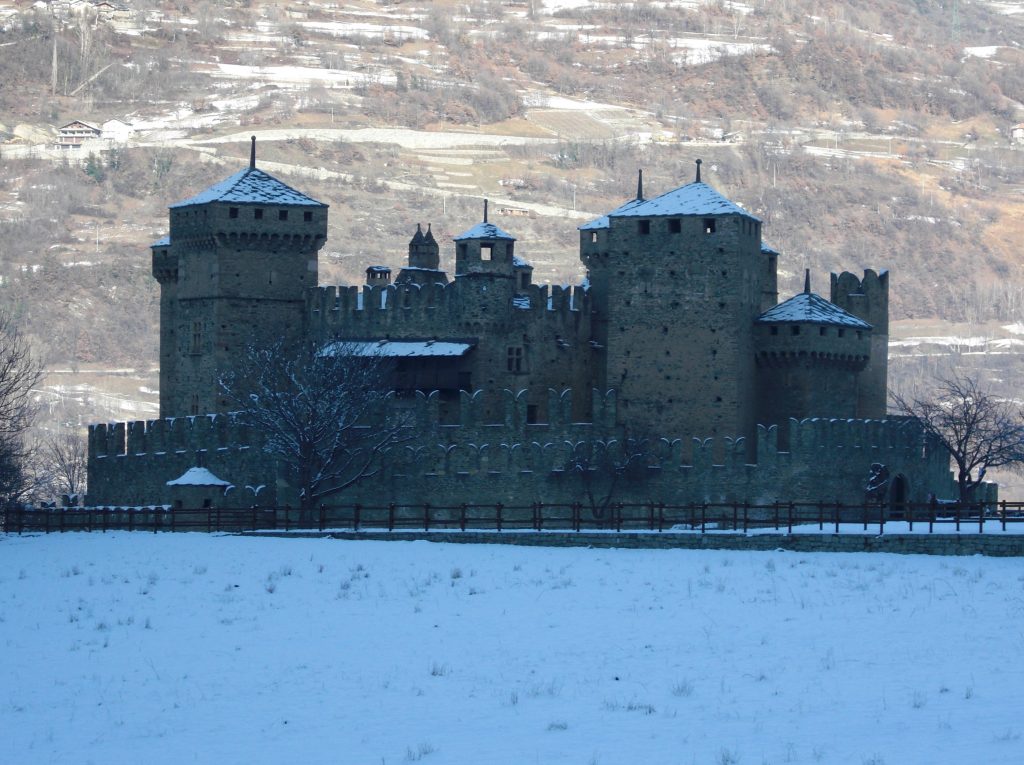

ISSOGNE CASTLE
Owned by the Bishops of Aosta up to 1379, Issogne Castle was renovated and extended around 1400 by Ibleto of Challant. Its current appearance developed under George of Challant, who transformed it into a luxurious residence. After having various other owners, it was bought by the artist Vittorio Avondo in 1872 who renovated it and gave it to the State. Visitors enter through the courtyard where dramatic overhead crests and a beautiful fountain can be viewed. There’s much to see in the castle itself too, including the Baron’s hall adorned in frescoes, the chapel with finely decorated vaults, the “King of France’s room” where the ceiling is covered lillies, and the “Knights of St. Maurice” room with the Order’s cross painted on it.
Fortress of Bard
During Theodoric’s reign in the 6th century, Bard was a defence garrison. Over the centuries it was constantly in the firing line and was once again the protagonist on Napoleon Bonaparte’s arrival in May 1800. The defensive structures of Bard Fortress were so efficient that Napoleon’s army took around two weeks to overcome the Austrian defences. The fortress was then dismantled to avoid further danger. What we see today is a reproduced building which evolved under Charles Felice who, starting in 1830, turned it into a military mass, although this started to deteriorate at the end of the 19th century. After more renovation in 1990 by the Region of Valle d’Aosta, it now hosts the Alps Museum and temporary exhibitions.
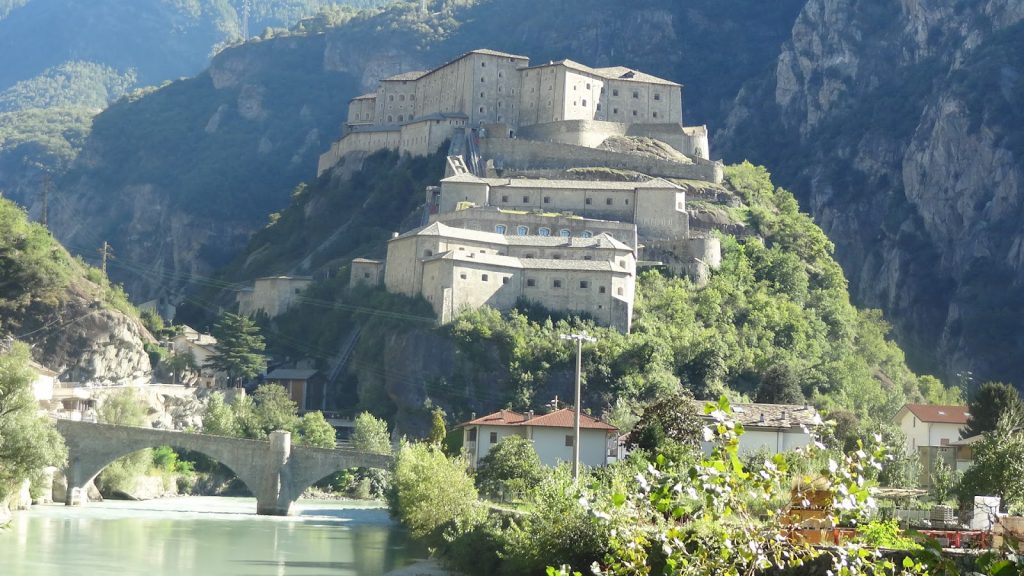

USSEL CASTLE
Built by Ebalo II of Challant in the 14th century, Ussel Castle represents the last evolutionary phase of medieval castles. After passing between the Challants and the Savoys, the castle became a prison until it was eventually abandoned. In 1983, Baron Marcel Bich, the owner at the time, gave it to the Region. It was then renovated and turned into an exhibition centre. The castle’s layout is rectangular, with blind arcades and beautiful double mullioned windows. The corners on the south side have two round towers, which were originally connected via a walkway. Despite its state of ruin before renovation, inside, you can still see monumental fireplaces. A picturesque walkway was added along the turrets, from where visitors can admire the Châtillon plain and its historic buildings.
VERRÈS CASTLE
Verrès Castle was completed by Ibleto of Challant in 1390. In 1536, Renato of Challant renovated the fortress, however when he died the castle was expropriated to the Savoys. The Challants took possession of the rock again in 1696, until the family lineage ended at the beginning 19th century. The main entrance door accesses the castle’s square courtyard inside the castle, which is designed in a ring around this focal point, across three floors connected via a monumental stone flight of steps with arches. Visitor can explore the weapons room, kitchen, lords’ rooms, and dining hall with stone vaults. Each year the castle stages the Historic Carnival in Verrès, which recalls the history and legends of the epic Countess Caterina of Challant.
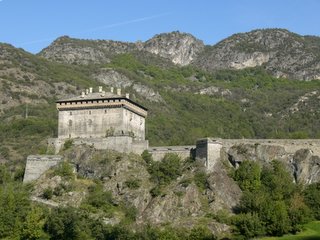
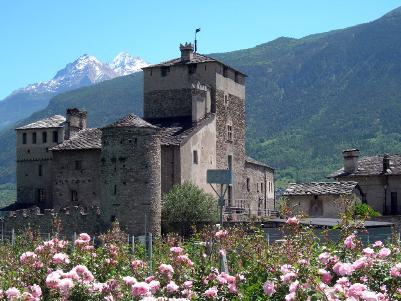
SARRIOD DE LA TOUR CASTLE
The origins of this castle in Saint-Pierre are mysterious. Located in a flatland area a short distance from the state road, the oldest building included the chapel and central square tower surrounded by the castle walls. In 1420, Jean Sarriod ordered the building of a real castle, by adding a series of structures to the pre-existing tower including a spiral staircase and crossed windows in cut stone. In 1478 the chapel was also transformed in honour of the Virgin Mary and St. John the Evangelist. Outdoor frescoes were added to mark the crucifixion and St. Christopher, and a small steeple was raised. The “Room of the Heads” owes its name to the ceiling supported by 171 corbels sculpted in grotesque shapes – mythical monsters and animals carrying heraldry coats of arms.
SARRE CASTLE
Built in 1710 on the ruins of a fortress mentioned as early as 1242, Sarre Castle was purchased by the King of Italy Victor Emanuel II, who renovated it and used it during his hunting expeditions in Valle d’Aosta. Umberto and Queen Maria José also resided in the castle during their holidays. In 1989 the Region of Valle d´Aosta purchased the estate to renovate it into an Alpine residence and museum marking the presence of the Savoys in the area. A visit to the ground floor is free, and there are guided tours (every half hour) on the upper levels where rooms are furnished with some of the castle’s original furniture found in the castle. You can see the royal apartments, grand games hall and hunting trophies, and discover the history of the Savoy dynasty.
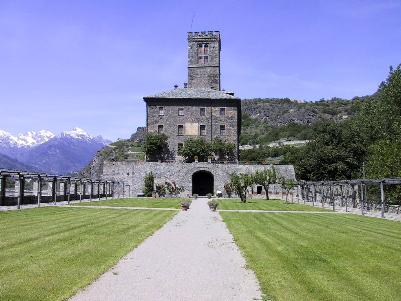
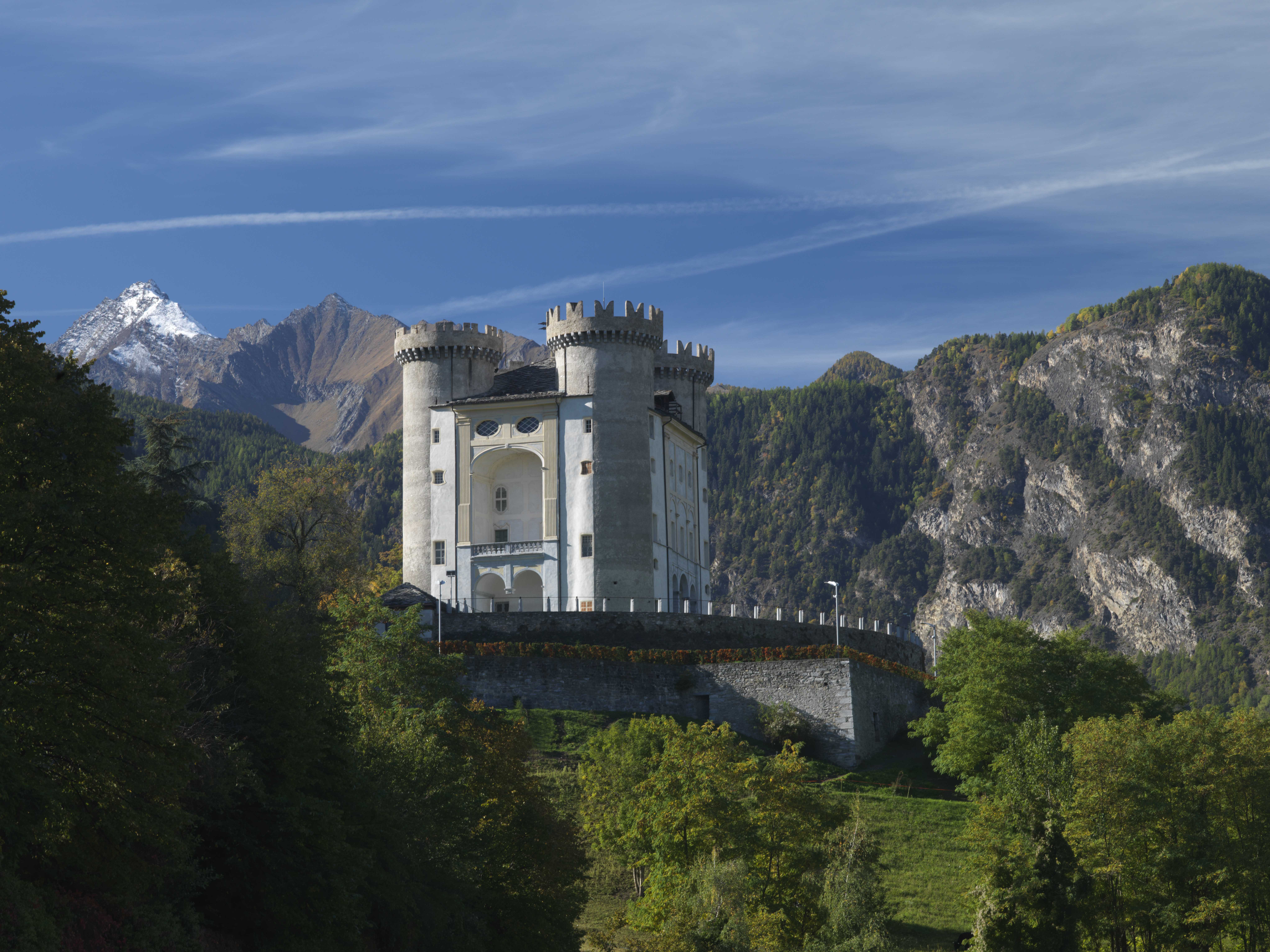
Aymavilles
The castle of Aymavilles is located in Valle d’Aosta along the road to Cogne on a hill surrounded by vineyards in the municipality of the same name. The castle underwent a long and elaborate renovation that began in 2000, which involved numerous professionals in the design, studies and historical research, archaeological investigations and restorations. The restoration involved both the architectural structure and the interior decorations, managing to enhance the particularities of the various building campaigns and the numerous structural changes that took place over the centuries. Numerous anecdotes, surprises and curiosities emerged from the past during the archival research and during the works, all of which are now visible during the visit.
Introd
Introd Castel stands on a promontory protected by the harsh gorges of the savara and the dora di Rhêmes. Around the year 1260, Pierre Sarriod of Introd transformed the early castle, which following the modifications of the 15th century became five-sided and almost circular In shape, setting it apart form other castles in Valle d’Aosta. These transformations mark the apogee of the Sarriod family, which included the Lords of Introd and La Tour. In the 19th Century, the castle was heavily damaged by two fires and was rebuilt at the start of 1900s by Gonella, who engaged the architect Chevalley. In the area in front of the castle is a magnificent construction, one of the rare existing examples of buildings made entirely from wood. Equipped with embrasures, the two rooms are now entirely buried underground. Enjoy the beautiful, historic ground floor and castle grounds on your trip.

